About Code Signing Certificate
A Code Signing Certificate is a digital certificate that contains information that fully identifies an entity and is issued by a Certificate Authority such as Corporate CA. The Digital Certificate binds the identity of an organization to a public key that is mathematically related to a private key pair. The use of private and public key systems is called Public Key Infrastructure (PKI). The developer signs code with its private key and the end user uses the developer’s public key to verify the developer's identity.
Why Code Sign?
Most mass-market computing devices sold today come with pre-loaded software, but the software that comes “out of the box” with the device is not all that will be needed for the full life of the device. Whether for a personal computer or a mobile device, users will frequently need to download additional software or applications. In other cases users are often advised by an application on their device, or the site they are visiting, that in order to experience or use the offered service they need to upgrade, patch or augment their current software. Users are asked to make a spot decision:
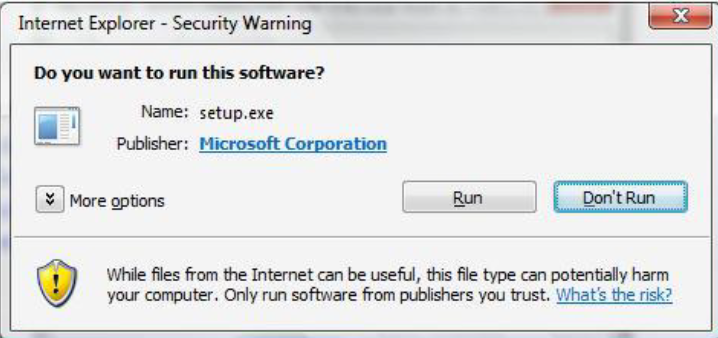
“Run or Don’t Run,” “Install or Don’t Install” or “Run or Cancel.”
In these situations, “Run/Don’t Run” asks the user whether or not to run the downloaded code. How does a user decide? How does a user or user agent (usually a “browser”) know whether or not to trust the software?
The answer is code signing.
To help users determine whether or not they can trust software before they install it, software publishers can digitally sign their code. A digital signature verifies who signed the code and that the code has not been subject to tampering. Digitally signed code, which is backed by a certificate issued by a CA acting as a trusted third party, is granted greater reliability than unsigned code. Generally, unsigned code should not be trusted, as it does not provide any evidence of origin or file integrity, which means the publisher cannot be held accountable for errors and the code is subject to tampering.
Armed with the information provided by a digital signature, users can make a more informed “Run/Don’t Run” decision.
What is Code Signing?
Code signing is the process of digitally signing executables and scripts to confirm the identity of the software author and guarantee that the code has not been altered or corrupted since it was signed. In order to sign the code, a software publisher needs to generate a private-public key pair and submit the public key to a CA, along with a request to issue a code signing certificate. The CA verifies the identity of the publisher and authenticates the publisher’s digitally-signed certificate request. If this vetting and key-verification process is successful, the CA bundles the identity of the publisher with the public key and signs the bundle, thus creating the code signing certificate.
Armed with the code signing certificate, the publisher is ready to sign the code. When the code is signed, several pieces of information are added to the original file holding the executable code. This bundled information is used by the software publisher’s users to authenticate the publisher and check for code-tampering. The entire sequence for bundling the digitally-signed code takes place as follows:
A hash of the code is produced
- Public-key algorithms are inefficient for signing large objects, so the code is passed through a hashing algorithm, creating a fixed-length digest of the file
- The hash is a cryptographically unique representation of the file
- The hash can be reproduced only by using the unaltered file and the hashing algorithm that was used to create the hash
The hash is signed using the publisher’s private key
- The hash is passed through a signing algorithm using the publisher’s private key as an input
Information about the publisher and the CA is drawn from the code signing certificate and incorporated into the signature
- The original code, signature and code signing certificate are bundled together

Verifying Code Authenticity
When a user agent loads the code, it checks the authenticity of the software using the packaged signer’s public key, signature and the hash of the file. If the signature is verified successfully, the user agent accepts the code as valid. If the signature is not successfully verified, the user agent will react by either warning the user or rejecting the code, according to the level of security being used. The signature is verified as follows:
Hash is verified
- The original code is passed through the hashing algorithm to create a hash
- The public key of the publisher is extracted from the bundle and applied to the signature information; applying the public key reveals the hash that was calculated when the file was signed
- The two hashes are compared; if equal, then the code has not changed and the signature is considered valid
Code Signing Certificate is verified
- The code signing certificate is checked to ensure it was signed by a trusted CA
- The expiry date of the code signing certificate is checked
- The code signing certificate is checked against the revocation lists to ensure it is valid
If the hash and the certificate are valid, then the code is considered valid. As such, it is accepted by the user agent and presented for installation. If the file is not considered valid, the user agent displays a warning message.
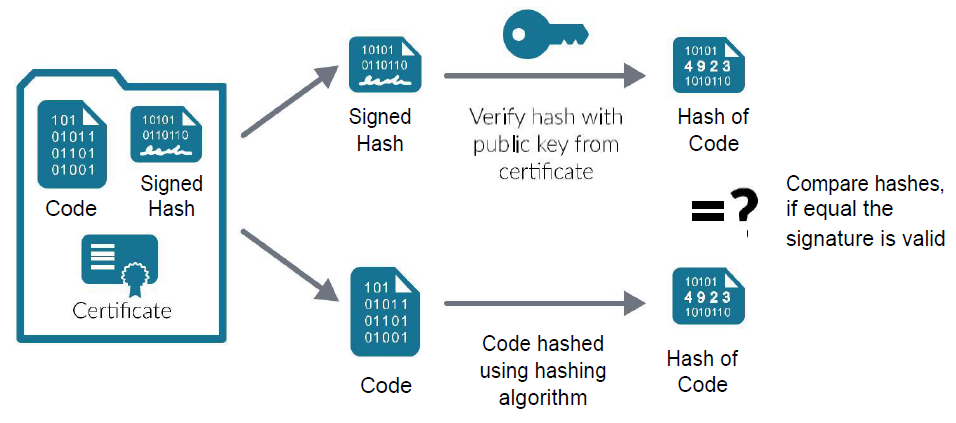
Code Installation Decisions
The code has been signed, the user has started installation and verification has taken place. How does the user know whether or not to accept the code?
The user must decide if they trust the software based on the messages above. The statement provides the following:
| Program Name: | Adobe Flash Player Installer |
|---|---|
| Publisher Name: | Adobe Systems, Incorporated |
| Code Signing Certificate: | The user would need to click on ”Show Details” drop down button, which will display a link to review the certificate. |
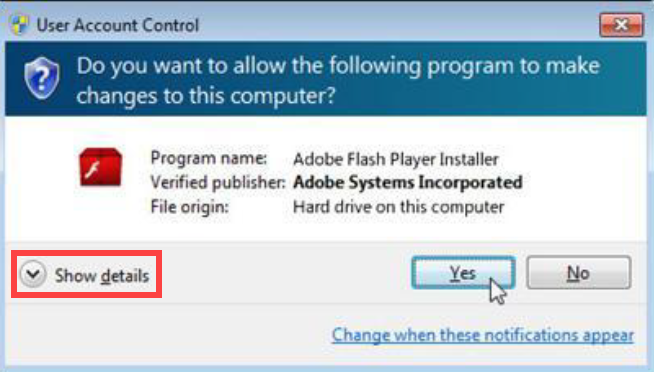
There are five simple steps users should take to determine whether software can be trusted:
- Check to see if you were planning to install the software.
- Check the file name to see if it indicates the software you were planning to install. In this case, the user is installing Adobe Reader 10, which the name seems to indicate.
- Check the publisher name to see if it matches who you think wrote the software. This may be difficult as the software download site may be different than the publisher’s site.
- Check the code signing certificate to see if the publisher’s name is in the certificate.
- Check to see if the certificate was issued by a publicly trusted CA.
Conversely, here is a dialogue for code that may be untrustworthy:
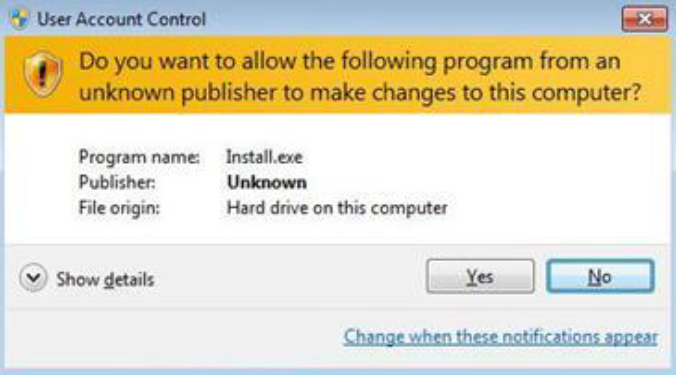
The program name is “Install.exe,” which is not specific enough to determine what code is being installed. The publisher’s name is “Unknown,” which means that a public CA did not verify the code signing certificate. The code may not be harmful, but it was likely signed with a self-issued code signing certificate. This means the user cannot trust who signed the code.
What is Time-Stamping?
What happens to signed code when the code signing certificate expires? In many cases, an expired certificate means that the signature validation will fail and a trust warning will appear in the user agent.
Time-stamping was designed to alleviate this problem. The idea is that if a user knows the time when the code was signed and the certificate was confirmed to be valid, then the user will also know the signature was valid at the time the software was published. Put another way, time-stamping is similar to a notarized handwritten signature which includes a third-party’s confirmation of when the document was signed.
The main benefit of time-stamping is that it extends code trust beyond the validity period of the code signing certificate. The code stays good as long as the user can run it. Also, the code signing certificate may be revoked or expire in the future, but the code can remain trusted.
Please note that with some client software, the code verification may not be valid after the time-stamp certificate has expired. The new Minimum Requirements for Code Signing, discussed below, will require time-stamping authorities (TSAs) to use a time-stamping certificate with a maximum validity of 135 months that will be renewed every 15 months. As such, expect time-stamp certificates to have a lifetime of at least 10 years.
Time-stamping the signature is implemented as follows:
- The signature is sent to the TSA.
- The TSA adds a time-stamp to the bundled information and computes a new hash.
- The TSA signs the new hash with its private key creating a new bundle of information
- The time-stamped bundle, the original bundle (that was sent to the TSA) and the time-stamp are re-bundled with the original code.
Upon receipt of a time-stamped signature, the following steps are completed by the user agent for verification (in addition to verification of the signature on the code itself):
- The TSA certificate is checked to ensure it was issued from a trusted root certificate and that its status is valid.
- The TSA’s public key is applied to the time-stamped signature block, revealing the hash calculated by the TSA.
- The validity of the TSA’s public key is verified by checking its expiry date and consulting revocation lists to ensure that it has not been revoked.
- The two hashes are compared. If the hashes are equal, the time-stamp is considered to be valid.
In the event that the code signing certificate must be revoked due to a compromise, the revocation will be made dependent on a specific date. The idea is that code signatures issued before the revocation date will remain valid and the software should still work.
Self-Signed versus Publicly Trusted
In most cases, software publishers have to sign their code in order to get it installed on an operating system. Publishers can sign their code using a self-signed certificate or using a certificate issued by a publicly trusted CA.
Due to the costs of buying a code signing certificate from a publicly trusted CA, some publishers may decide to try a self-signed certificate, but there are differences between the two types of certificates that should be considered.
| Self-Signed Certificate | Certificate issued from a Publicly Trusted CA |
|---|---|
| Issuer provides their own identity, which is not published as part of the code verification security message | CA performs identity verification, which is displayed in a code verification security message |
| Issuer provides their own policy and quality | CA issues certificates in accordance with the industry policy and quality |
| Signatures will provide a warning indicating that the software was created by an “Unknown Publisher” | Signatures will clearly identify the publisher’s name |
| Compromised certificates cannot be revoked and could harm software user | Compromised certificates can be revoked, and if time-stamping was used, code signed before revocation will remain trusted |
To ensure user trust and code longevity, it is recommended that software publishers use a certificate issued from a publicly trusted CA.
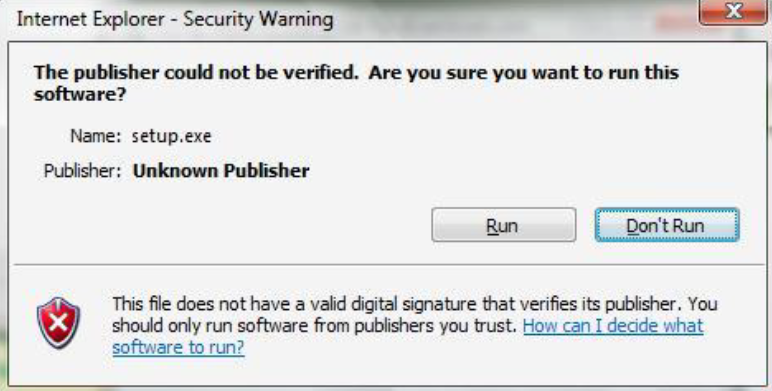
Code Signing Certificate Standards
Through 2016, there are only requirements for the management and issuance of EV code signing certificates. As of February 2017, a new standard for non-EV code signing certificates will be supported. This standard is required by Microsoft, so all publicly trusted CAs will issue certificates to meet the requirements.
The minimum requirements for code signing were not published by the CA/Browser Forum, but many of the requirements are from their Baseline Requirements. For code signing the minimum requirements also address other items such as
- Publisher identity: Common name is the publisher’s legal name, where the Organization name can also be the publisher’s legal name or a DBA name.
- Minimum key size: 2048-bit RSA or ECC curves P-256, P-384 or P-521
- Validity period: Maximum validity period is 39 months.
- High Risk Requests: CAs should check databases to ensure known publishers of suspect code are not issued a code signing certificate.
- Private Key protection: Due to suspect code being signed with compromised keys, private keys are required to be encrypted on hardware or kept on a device separate from the host of the signing software function.
- Takeover Attack: Publishers’ with history of a takeover attack will require a higher level of private key protection
- Certificate revocation: Specific revocation and processes have been established which include revocation requests from an application software supplier (e.g., Microsoft)
- Time-stamping: Certification authority, time-stamp certificates and time-stamp authority (TSA) requirements have been defined.
Code Signing Best Practices
The biggest issue with code signing is the protection of the private signing key associated with the code signing certificate. If a key is compromised, the certificate loses trust and value, jeopardizing the software that you have already signed.
Seven best practices for code signing include:
Minimize access to private keys
- Allow minimal connections to computers with keys
- Minimize the number of users who have key access
- Use physical security controls to reduce access to keys
Code Signing Best Practices
The biggest issue with code signing is the protection of the private signing key associated with the code signing certificate. If a key is compromised, the certificate loses trust and value, jeopardizing the software that you have already signed.
Seven best practices for code signing include:
Protect private keys with cryptographic hardware products
- Cryptographic hardware does not allow export of the private key to software where it could be attacked
- Use a FIPS 140 Level 2-certified product (or better)
- Use an EV code signing certificate which requires the private key to be generated and stored in hardware
Time-stamp code
- Time-stamping allows code to be verified after the certificate has expired or been revoked
Understand the difference between test-signing and release-signing
- Test-signing private keys and certificates requires less security access controls than production code signing private keys and certificates
- Test-signing certificates can be self-signed or come from an internal test CA
- Test certificates must chain to a completely different root certificate than the root certificate that is used to sign publicly released products; this precaution helps ensure that test certificates are trusted only within the intended test environment
- Establish a separate test code signing infrastructure to test-sign pre-release builds of software
Authenticate Code to be Signed
- Any code that is submitted for signing should be strongly authenticated before it is signed and released
- Implement a code signing submission and approval process to prevent the signing of unapproved or malicious code
- Log all code signing activities for auditing and/or incident-response purposes
Virus scan code before signing
- Code signing does not confirm the safety or quality of the code; it confirms the publisher and whether or not the code has been changed
- Take care when incorporating code from other sources
- Implement virus-scanning to help improve the quality of the released code
Do not over-use any one key (distribute risk with multiple certificates)
- If code is found with a security flaw, then publishers may want to prompt a User Account Control dialogue box to appear when the code is installed in the future; this can be done by revoking the code signing certificate so a revoked prompt will occur
- If the code with the security flaw was issued before more good code was issued, then revoking the certificate will impact the good code as well
- Changing keys and certificates often will help to avoid this conflict
How to apply for the Code Signing Certificate?
Government entities shall be enrolled at TS's Web RA portal before they are able to apply for certificates from either Corporate CA or Infrastructure CA. The Government entity performs the following steps to share the needed details with TS RA:
- A representative from the Government entity contacts TS by sending an email to TS.certification.info@pki.gov.pk
- The Government entity representative expresses the Government entity needs in the email
- TS RA responds with the necessary information needed from the Government entity representative
- The Government entity representative is required to fill and submit a form to TS RA
Once the Government entity has been registered with the TS, the Government entity representative can fill and submit the certificate application form
© 2024 Technology Source. All Rights Reserved | TS IT Department | info@Techsource.iq

